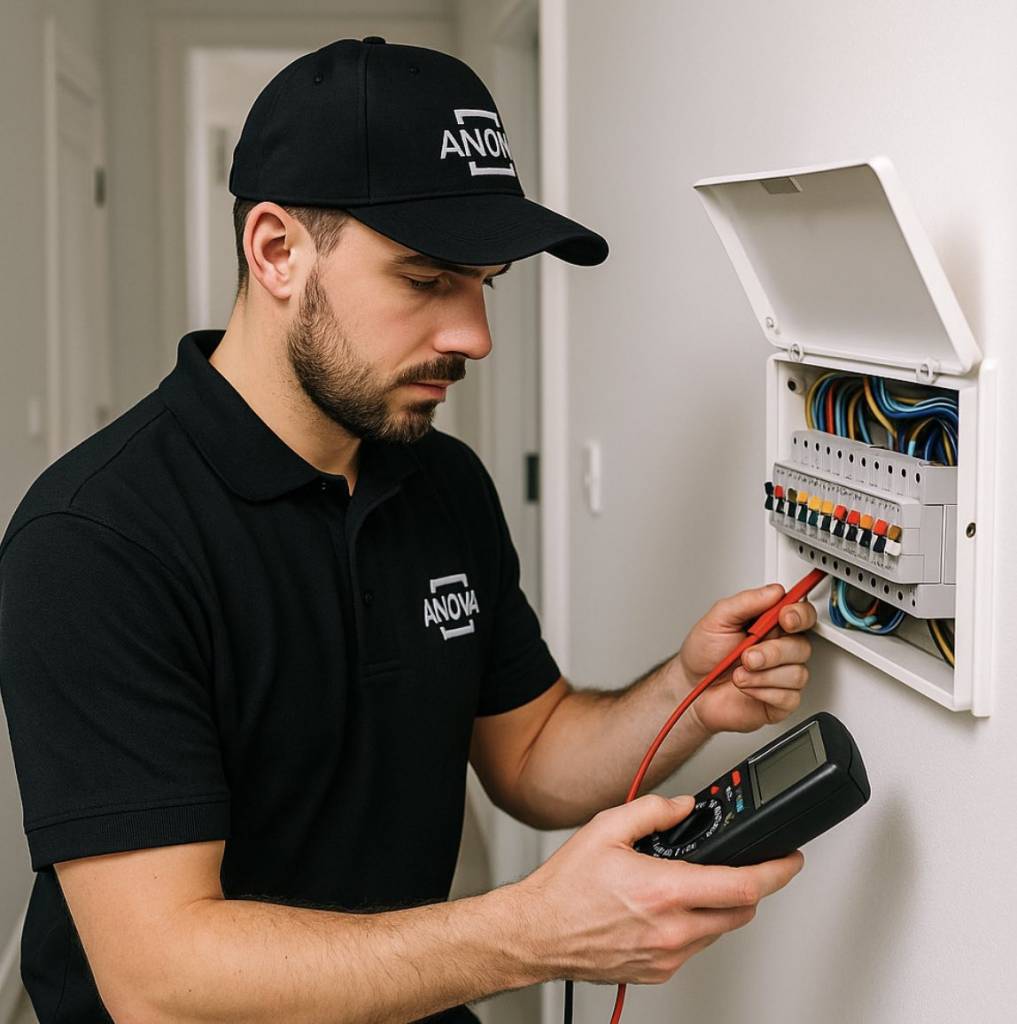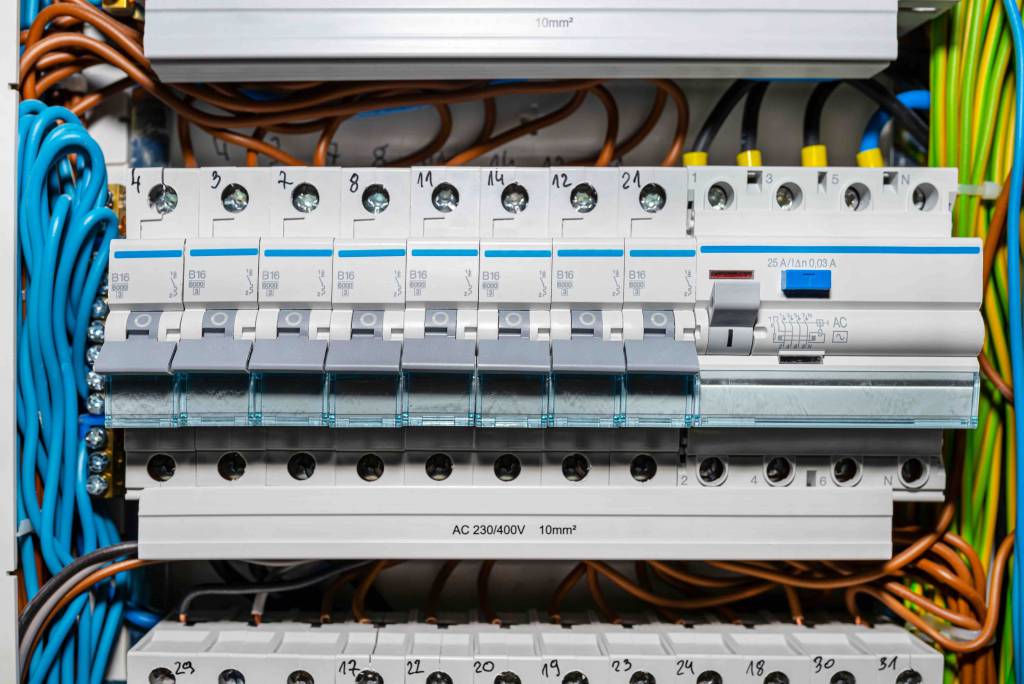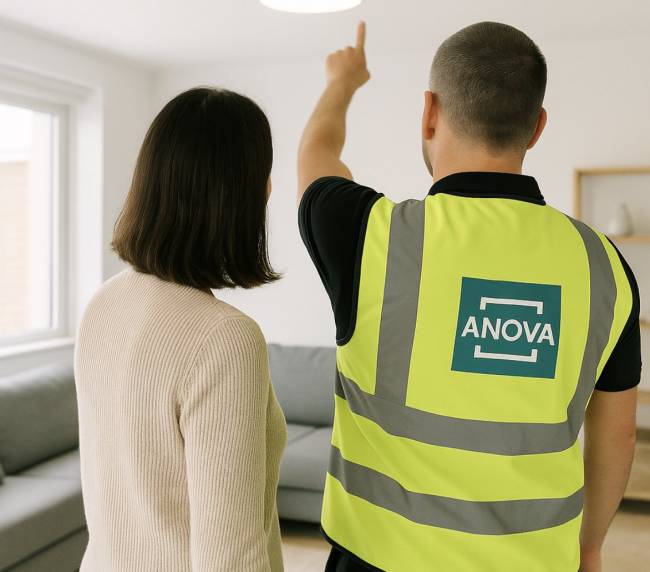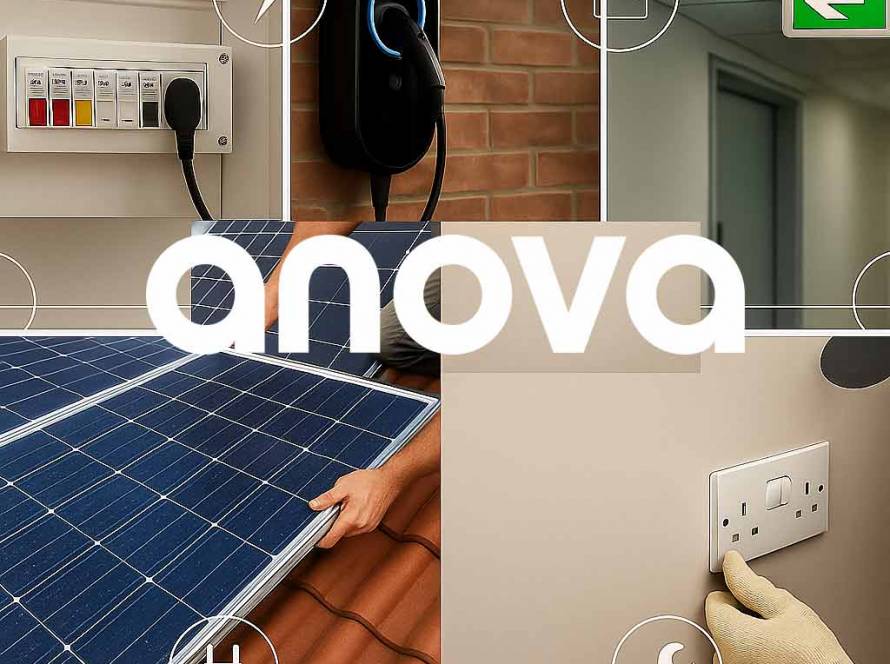An EICR (Electrical Installation Condition Report) is a legal requirement for rental properties in England under the Electrical Safety Standards in the Private Rented Sector Regulations 2020. It must be renewed every five years or when tenants change. Failure to comply can result in fines up to £30,000. Here’s what landlords need to know in 2025 to stay compliant and keep properties safe.
Introduction
If you’re a landlord, letting agent, or property manager in 2025, one document can protect your tenants, your investment, and your legal standing: the EICR.
Yet, many landlords are still being caught out by the five-year testing rule introduced in the Electrical Safety Standards in the Private Rented Sector (England) Regulations 2020. Worse still, a surprising number of properties fail their inspections due to issues that could easily have been resolved beforehand.
In this guide, we’ll break down what an EICR is, why it’s essential, the risks of non-compliance, and how Anova helps make it all much simpler.


What is an EICR?
An EICR (Electrical Installation Condition Report) is a professional assessment of your property’s electrical systems and installations. Assessing if your installation is in a good working order and safety for continual use.
Some items checked for:
- Overloaded circuits
- Potential shock or fire hazards
- Outdated wiring
- Poor workmanship
- Lack of earthing or bonding
The report concludes with either a satisfactory or unsatisfactory rating and may list required remedial works.
Think of it like an MOT for your property’s electrics, except in some cases may legally required for landlords.
Failure to comply can result in fines up to £30,000.
Why Do Landlords Need One?
Since July 1st, 2020, the law requires all landlords in England to have a valid EICR carried out:
- At least every five years
- At the start of a new tenancy
- If major electrical work has been carried out
If you’re selling a home, a recent EICR can also speed up conveyancing, provide peace of mind to buyers, and prevent costly surprises in surveys.
✅ Anova Tip: Even if you’re not renting now, preparing for future lets or sales means having an up-to-date EICR.

What Happens If You Don’t Have One?
The penalties for not complying are serious:
- Local authorities can issue fines up to £30,000
- You could be held liable for injuries or fires caused by faulty electrics
- Tenants may withhold rent or take legal action if they feel unsafe
You’re also putting lives at risk — faulty electrics cause around 20,000 house fires a year in the UK.
What Are the Most Common EICR Failures?
Some of the most common issues flagged in EICRs include:
- Missing or faulty RCD protection (especially for bathrooms)
- Broken or damaged sockets and switches
- Old consumer units without compliant protection
- DIY wiring not up to standard
- Poor earthing and bonding around gas or water pipes
These can often be resolved with quick remedial work — but ignoring them is never worth the risk.
When Does a Landlord Need a New Report?
You need a new EICR:
- Every 5 years
- At the start of a new tenancy (unless an existing report is still valid)
- If the property is sold or major electrical changes are made
- When requested by local authority enforcement officers
📅 Anova can track your EICR expiry dates for you, so you’re never caught out by missed deadlines.
When Does a Landlord Need a New Report?
The recommended date for your next EICR is always stated on your most recent inspection report. This is determined by the inspecting engineer based on the condition of the installation, not a fixed rule, it can also be required but not always necessary on the points mentioned below:
- Every 5 years
- At the start of a new tenancy (unless an existing report is still valid)
- If the property is sold or major electrical changes are made
- When requested by local authority enforcement officers
While the Electrical Safety Regulations require a valid EICR to be in place at least every five years, that interval may be shortened if issues are present or if the installation is older.
🔁 Some letting agents or housing providers may have internal policies requiring a new EICR at every change of tenancy — however, this is not always a legal requirement.
If you’re unsure whether your current report is still valid, or if a new inspection is needed, we’re happy to review your paperwork and offer guidance. It’s always better to double-check than risk non-compliance.
What Does “Satisfactory” Actually Mean?
If your EICR comes back “satisfactory,” it means the installation has no immediately dangerous or potentially dangerous issues — and can remain in service as it currently stands.
- No C1 (danger present) or C2 (potentially dangerous) codes
- No FI (further investigation) required
- The installation meets the minimum safety standards expected at the time of testing
But here’s the common misconception:
⚠️ Electrical installations do not “pass” or “fail.”
An EICR is a condition report, not a certificate of compliance. It presents an engineer’s professional assessment of whether the installation is satisfactory or unsatisfactory for continued use.
If the report is marked unsatisfactory, it simply means that improvements are recommended to bring the installation in line with safety expectations. It is then the client’s decision whether to carry out those remedial works.
At Anova, we will always explain the results clearly and support you in making an informed choice — whether that’s addressing minor issues now or planning phased improvements.
How Anova Helps You Stay Compliant
At Anova, we understand that electrical compliance can feel overwhelming — especially for landlords managing multiple properties or working with letting agents.
That’s why we offer:
- ✅ Same-day EICR testing (subject to availability)
- ✅ Transparent pricing with no hidden fees
- ✅ Clear explanation of results and options
- ✅ Annual tracking and reminder service
- ✅ Fast remedial works to resolve unsatisfactory findings
- ✅ Emergency call-outs if urgent issues are identified
🔗Book your EICR with Anova todayStay compliant, stay safe.
Electrical safety isn’t optional. An EICR is more than just a tick-box exercise — it’s your responsibility as a landlord and a key part of providing a safe, legally compliant property in 2025.
Don’t wait for a fine or incident to take action. Let Anova guide you through the process with clarity, care, and complete peace of mind.
📞 Need help understanding your current report or arranging testing? Contact Anova now for support.
📞 Call: 02080516482
📩 Email: info@anovauk.com
💬 WhatsApp: Click the button below




